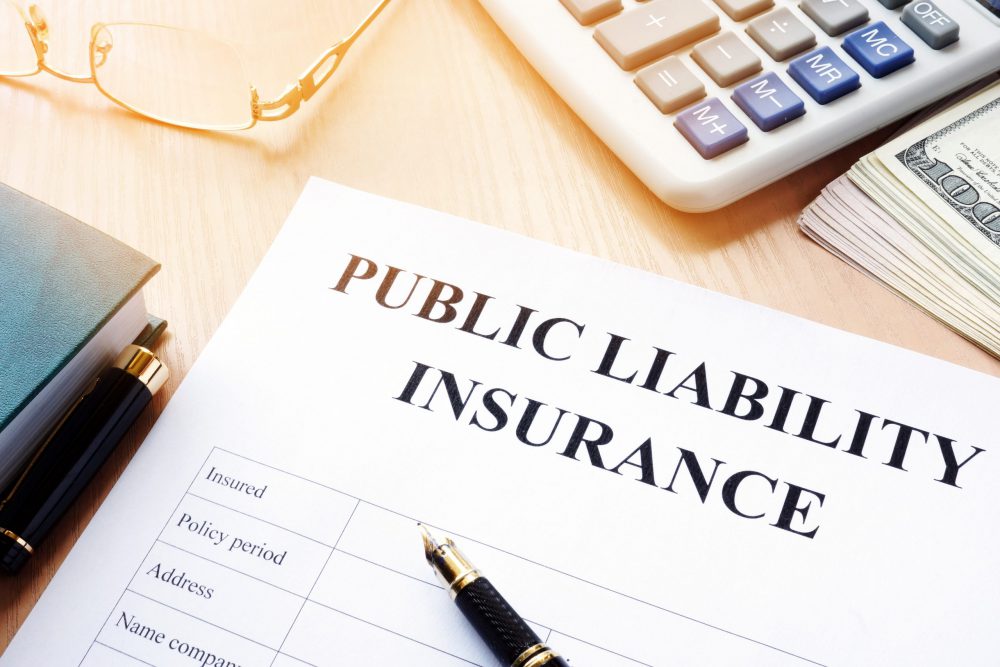*Please note: this article provides general advice only, it has not been adapted in the wake of COVID-19.*
Leaders of local councils have the opportunity to provide various services and resources to their community. These offerings can help ensure the area is a safe place to live, foster success for businesses and keep local communities both happy and healthy.
However, shouldering such unique responsibilities and serving so many members of the public opens the door to a wide range of risks. Indeed, as your council is expected to protect and preserve the public, councils are often the first to be blamed when something goes wrong.
Whether it be an injury to a child as a result of faulty playground equipment in the public park, a cyber-attack that exposes the personal data of community members or a dangerous slip on the deck of the local pool, public liability is a serious issue for local councils that can present itself in a variety of ways.
Ensure your community stays safe by implementing the following risk management methods to combat these common public liability concerns.
Swimming Pools and Leisure Centres
If your community runs a public swimming pool, implement the following risk controls:
- Establish a normal operating plan (NOP). An NOP should include how the pool will operate on a daily basis, a map that offers a detailed layout of the pool area and location of all necessary equipment, a schedule that includes the operation hours and times that specific groups will be using the pool, as well as general user group characteristics.
- Generate an emergency action plan (EAP). The EAP should include detailed instructions on what action should be taken by each staff member in the event of an emergency. This should also offer emergency contact information and the location of any emergency equipment (e.g. a first-aid kit).
- Ensure trained and certified lifeguards are on the pool deck at all times during operation hours. Require routine training for all staff members, making sure they are competent in implementing the NOP and EAP.
- Install proper pool access for people with disabilities, such as hoists to help wheelchair users enter the pool. Regularly inspect these devices to ensure they are effective and safe.
- Display safety signs and information throughout the pool area to warn the public of potential hazards. This includes sudden changes in pool depth, areas that are unsafe for diving, slippery surfaces and instructions for equipment use. Make sure this signage remains readable and unobstructed.
- Implement a routine maintenance plan that preserves the pool structure (e.g. floor surface, pool edges and chemical balances) and equipment (e.g. toys, hoists and lifesaving devices).
- Install pool alarms to alert the public in an emergency (e.g. fire or chemical problem). Consider using visual stimuli for hearing-impaired local communities in addition to a noise or recording. Routinely test all alarms.
- Have certain staff members be responsible for recording the number of people in the pool area, paying special attention to children and the elderly. Do not allow children to be left unattended in the water. Never allow the amount of people in the pool area to surpass the maximum capacity.
- Install effective security systems to prevent unauthorised access to the pool area or theft of pool equipment.
- Keep proper documentation of all accidents and injuries that take place.
- Regularly review the water system for proper chemical and temperature management.
In the case of leisure centres, use this guidance:
- Make sure all volunteers, coaches or instructors are competent, certified and trained for their role. Ensure a proper vetting process to avoid hiring unsafe or fraudulent employees.
- Prevent slip, trip and fall concerns with an effective cleaning and maintenance routine. Maintain outdoor areas by storing equipment properly, taking good care of plants, ensuring a smooth and safe ground surface, and implementing controls to handle weather-related risks (e.g. ice and snow). Maintain indoor areas by having designated storage areas, keeping harmful equipment in secure locations and regularly cleaning surfaces.
- Ensure all leisure centre equipment (e.g. sports balls, baseball bats and tennis rackets) is in good condition. Make sure members of the public receive proper instruction for how to use equipment safely. Perform routine maintenance and replace items if necessary.
- Make sure electrical and water systems are in working order with regular maintenance.
- Ensure proper ventilation in gym areas with windows and doors that offer airflow.
- Implement good housekeeping practices in changing areas, locker rooms and showers to avoid sanitary hazards or slips and trips. Be sure there is proper access in toilet areas for people with disabilities.
- Display safety signs and information throughout the facility to warn the public of potential hazards, such as slippery surfaces.
Public Playgrounds and Parks
- Before installing, refurbishing or updating a playground area, be sure to receive competent guidance from a certified designer or builder to ensure a safe, secure structure.
- Ensure all ground surfaces are smooth, level and undamaged. Pay special attention to non-solidified surfaces, such as sandpits. Keep surfaces clear of litter or dangerous objects.
- Perform routine inspections and maintenance on all playground equipment, ensuring it is compliant with legal standards, well supported and safe for use. Consider these common risks:
- Lacking safety barriers or guards on potentially dangerous equipment (e.g. equipment at height)
- Missing supports or damaged timber work
- Wear and tear (e.g. chipped paint, rusted surfaces, or noisy and dangerous movement of rocking items, roundabouts or cable runways)
- Damaged or blocked slide chutes
- Unsteady or damaged ropes, climbing frames or bars as well as broken swing chains or damaged swing seats, illegible or missing safety signage, and signs of vandalism or equipment destruction
- Make sure all inspections and maintenance processes are properly documented.
- Regularly review any fencing areas for the following potential hazards:
- Child entrapments
- Sharp or projecting fittings and dismantled, broken or rusted materials
- Weak materials that would be destroyed easily by vandalism or severe weather conditions, or materials that cannot handle the slope or pressure of the ground surface below it
- Perform routine inspections and maintenance on trees in public areas. Use these tips:
- Develop a process to identify high-risk trees. Consider characteristics such as the age of the tree, signs of rotting, loose roots or branches.
- If a tree shows signs of rotting or dead roots, establish a safe procedure for removal.
- Keep records of tree inspections, maintenance and removal processes.
If you would like information on reopening playgrounds due to COVID-19, please see our playground guidance and risk assessment templates.
Cyber-security
- Establish and communicate cyber-policies to your workplace, such as a ‘bring your own device’ (BYOD) policy, safe internet use policy and data breach response policy.
- Ensure a secure internet connection on workplace devices with antivirus and malware protection.
- Only allow qualified, trusted employees access to sensitive data. Require employees to regularly update their device passwords and save sensitive information in appropriate locations. Use practices such as encryption to protect data during a breach.
- Routinely train staff on cyber-security best practices, including how to spot phishing and how to respond to a data breach.
- Ensure your data protection practices are compliant with the GDPR.
- Only allow competent employees to have access to your social media accounts.
For more information on staying safe online throughout the COVID-19 pandemic, see our cybersecurity tips to keep councils online data safe. If you would like to learn more about Cyber Insurance, please click here.
Public Buildings and Property Damage
- Conduct routine inspections of indoor and outdoor ground surfaces. Install new surfaces when needed and perform regular maintenance to remedy any problems. Additionally, set up a programme that helps the reporting and clean-up/mitigation process run smoothly (eg caution signage on slippery surfaces, leaf raking and snow shovelling).
- Install proper lighting in all areas of public buildings, including the car park. Be sure emergency exits are properly illuminated.
- Offer building access features for people with disabilities, such as wheelchair accessible ramps.
- Implement an effective waste management routine to avoid rubbish build-up or litter.
- Conduct routine maintenance on all electrical and water systems. Make updates when necessary.
- Be sure hazardous materials are stored securely and only available to certified employees.
- Implement an EAP in case of a building emergency and train staff to ensure they can execute the plan.
- Be sure that all building employees are competent, trained and certified in the tasks they are performing and equipment they are using. Offer employees information on safety best practices.
- Display and maintain proper signage to warn members of the public of potential building risks.
- Consider the risks from weather-related conditions. Ensure the building has an action plan for potential scenarios (e.g. falling trees, burst pipes, flooding and storms).
Lastly, keep in mind that your local council should perform routine risk assessments on each property that they are responsible for. For more guidance as well as information on insurance solutions to meet your council’s needs, email us at [email protected].





